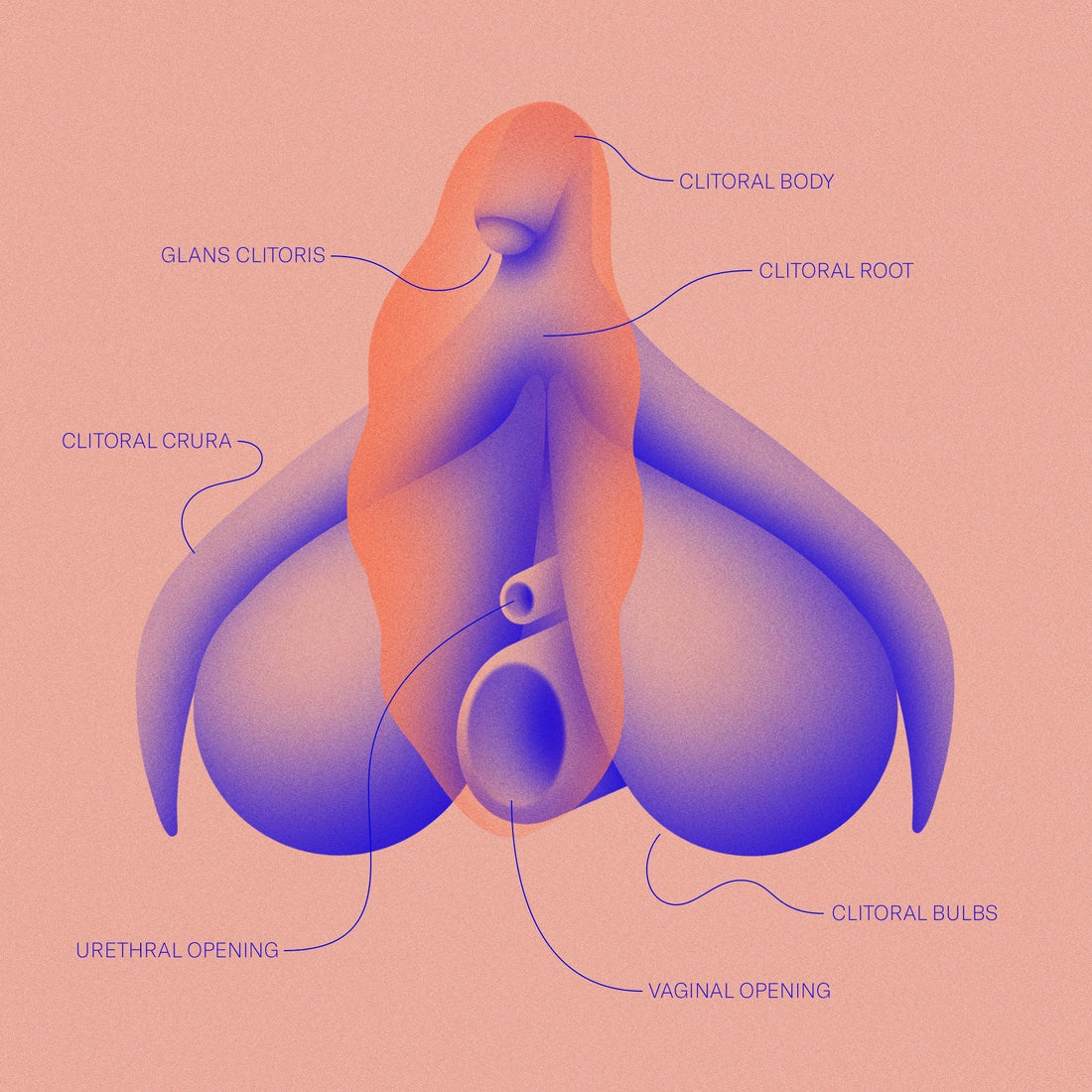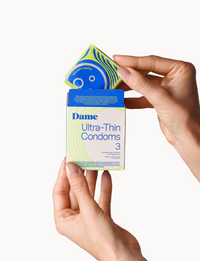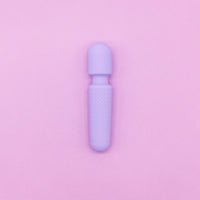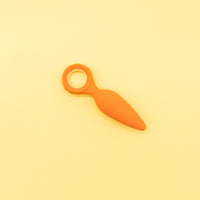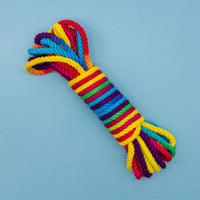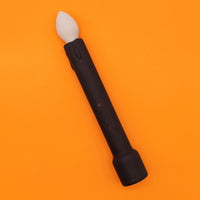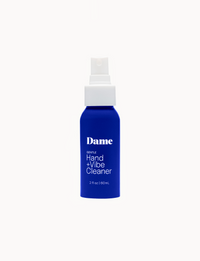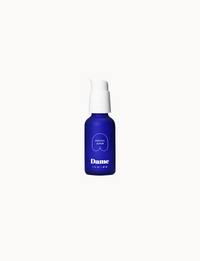Alexandra Fine, Credentialed Sexologist, M. Psych | Written by Dame
If you’re one of those folks who’ve laughed off stories about people having multiple orgasms, you’re far from alone.
After all, as many as 10% of vulva-havers say they have never experienced an orgasm, and even more can’t climax just from sexual intercourse.
Even experts on “sexual health” discounted reports of multiple orgasms as either mistaken or extremely rare until about fifty years ago. It took the revered sex experts Masters and Johnson to report in 1966 that multiple climaxes weren’t just possible – but that many vulva owners experienced them regularly.
Today’s sex educators and “sexologists” understand the truth that’s been reported by multiple research surveys: approximately 10-15% of vulva owners have had multiple orgasms. Even more illuminating is the fact that between one-third and one-half of health professionals say they are multi-orgasmic; that implies that those who are more familiar with their bodies can actually use that knowledge to climax multiple times.
Penis owners, we haven’t forgotten about you. Most of you don’t even consider the possibility that you’d be able to have more than one orgasm in a sex session, since you need time to recharge after ejaculation. (Sex therapists call that the refractory period.)
Here’s the good news we have for you: some penis-havers actually are multi-orgasmic – there just hasn’t been much research or reporting on the subject.
That’s not all of the good news. As it turns out, people of all genders can learn to have multiple orgasms. It’s true that some are able to accomplish that goal more than others, but knowledge, exercise and practice can work wonders.
Ready to give it a try?
What Are Multiple Orgasms, Anyway?
This seems like a good place to start. It’s difficult to reach a goal without understanding it.
To begin with, multiple orgasms are very different than what’s called edging – the technique of bringing yourself (or a partner) right to the “edge” of climax, backing off for a moment, and then resuming the sexual activity. Edging can continue for quite some time until you’re ready for the big finish, but it only results in one orgasm.
Here’s something else that’s different than multiple orgasms: experiencing a series of smaller, irregular muscle contractions after climaxing, for another 30-60 seconds or so. Those contractions usually provide a measure of sexual pleasure, but they’re what experts call a “Type 2 orgasm” and are really just the tail end of a climax. They’re not a second orgasm.
Multiple orgasms are actually separate and distinct climaxes during the same period of sexual activity. In some cases they occur almost one after another, while others may experience them within a period of seconds or even minutes. The defining factor is that arousal lasts throughout; there’s no resting (or refractory) period between them.
Some people are more prone than others to experience multiple orgasms.
To start with, vulva owners are likelier to climax several times for a couple of reasons. First, their refractory period is shorter than it is for penis owners. That would seem obvious (penis-owners usually aren’t ready for a second round for a while), but it’s also been documented in research.
Secondly, vulva-havers are able to experience several “types” of orgasms: clitoral orgasms, vaginal/g-spot orgasms, and simultaneous or “blended” orgasms. (We’ll leave the discussion of anal orgasms for another day.) What some describe as multiple orgasms can simply be consecutive or concurrent occurrences of climaxing caused by sexual pleasure experienced in different erogenous zones.
Research has found more specific factors which have been found to contribute to a vulva owner’s likelihood of achieving multiple orgasms. They include continuous use of vibrators or other sex toys during a sex session, a session lasting at least an hour, and having a very active sex life (defined as having intercourse daily).
Mental outlook is also important; multiple climaxes are more common among those who have sexual desires more than once a day, and those who feel strongly that they are “good in bed.” Studies have also found that multiple orgasms among survey respondents are just as common while masturbating as during sexual intercourse.
There isn’t as much data on what makes penis owners more likely to experience orgasm multiple times. A survey of available research did find that those younger than 30 are more prone to have more than one climax; other possible factors include sexual encounters with multiple or new partners, using sex toys, taking psychostimulant drugs like cocaine or methamphetamines, or having practiced achieving orgasm without ejaculation.
It’s important to remember that having an orgasm and ejaculating aren’t the same thing. The body can only create so much ejaculate at a time, so penis owners who have more than one or two climaxes usually find that the rest are usually what are called “dry” orgasms.
One more thing to keep in mind: a recent British documentary focused on “super orgasms” – interviewing vulva-havers who have had between 60 and 100 orgasms in one sex session. It found that those able to have these hard-to-imagine experiences had slower alpha brain waves than most people, meaning that their brains were “quieter,” allowing them to focus more on sexual pleasure than anything else. You may never get to the point of experience a super orgasm, but relaxing and keeping your mind as clear as possible may help you have more than one climax.
There’s more than that to consider, though, if you want to become multiorgasmic.
How to Have Multiple Orgasms
Most people can take a few piano lessons and be proficient enough to play a song, but being able to play a symphony certainly requires a lot more work.
Comparing orgasms and multiple orgasms, to songs and symphonies, may be a bit simplistic. But the idea makes sense: you can’t get good at anything without practice. Here’s what you should practice to turn your sexual experiences into symphonies.
Controlling Your Pelvic Floor Muscles
The contractions that foreshadow and accompany an orgasm are contractions of the pubococcygeus muscles (often called the PC muscles) located in the pelvic floor. These muscles support the bladder, bowel and uterus (in those who have one), control bathroom functions – and play a major role in achieving orgasm.
Being able to control the contraction and relaxation of your PC muscles can create more intense orgasms, make them last longer, and help you work toward having multiple orgasms. And you can strengthen those muscles and gain control over them by regularly performing Kegel exercises, the same ones that women practice during pregnancy and before childbirth.
You don’t need to work with a health professional or certified sex therapist to figure this stuff out. It’s pretty easy.
First, it helps to find the PC muscles you’ll be strengthening, so you know that you’re exercising the right ones. Those with vulvas can insert a finger into their vagina and squeeze the finger internally; those with penises can insert a finger into the rectum and squeeze it with internal muscles. The PC muscles will be the ones that tighten.
There’s an easier method that works for everyone, though. The next time you’re urinating, deliberately (and briefly) stop the urine from flowing. The internal muscles you use to do that are the pelvic floor muscles which you’ll be learning to control.
Now you’re ready to exercise. Tense (or squeeze) the PC muscles for three seconds, then relax them for three seconds. Do ten sets, several times per day. Over time, increase the length of time you hold and relax the muscles to ten seconds, or even twenty seconds.
It may take a month or two before you notice a real difference. Eventually, however, stronger pelvic floor muscles will make sexual activity and orgasm more pleasurable, let you last longer before climax, and reduce the length of your refractory period – meaning you’ll be more likely to experience multiple orgasms.
Practice Peaking
We’ve already briefly discussed peaking, and the fact that it isn’t the same as having multiple climaxes. But it can play an important role in training yourself to be multi-orgasmic.
Quick reminder: peaking means getting almost to the point of orgasm, and then pausing to relax slightly before resuming sexual activity. Why would it help to practice peaking? Because it trains you to remain at a high level of arousal for a long period of time, with the pleasure coming in waves. That’s exactly the “zone” you want to be in to be able to have multiple orgasms.
Don’t Masturbate
We don’t mean permanently, of course. But increased sensitivity to foreplay and sexual play makes you more apt to experience several climaxes. If you “deprive yourself” for a few days ahead of time your sexual responses will be more acute, and your body may be ready for a second orgasm shortly after the first time you climax.
Try to Relax, Slightly
Experiencing multiple orgasms isn’t a frantic race to climax as many times as possible before you’re “done.” Think of it more like a strenuous jog, during which you allow yourself to vary your pace to keep going while still enjoying the experience.
When you feel your heart race increasing, fight the urges to start breathing faster and pushing (or pumping) harder. That slight relaxation will heighten your sensations, while letting you focus on what your body is feeling, your erotic stimuli and the experience. It will also let you last longer and, ideally, be able to climax more than once.
Use Different Types of Stimulation or Different Sex Positions
Different types of orgasms are produced through slightly different neural pathways, so varying your diet in bed can make it easier to experience several climaxes in a row.
For vulva-havers, that could mean switching to clitoral stimulation after having a g-spot orgasm. Penis-havers could direct their attention to their prostate immediately after ejaculation. Partners could change angles, positions or types of stimulation – or reach for a vibe – after the first orgasm. (Just remember that lube can be your second-best friend, the longer your sex session lasts.)
Some may draw a distinction between multiple orgasms experienced during the same sexual activity, and “stacked” orgasms experienced after changing positions or types of stimulation – but why get into semantics? If you’re able to climax more than once, don’t worry about what to call it. Just enjoy it!


